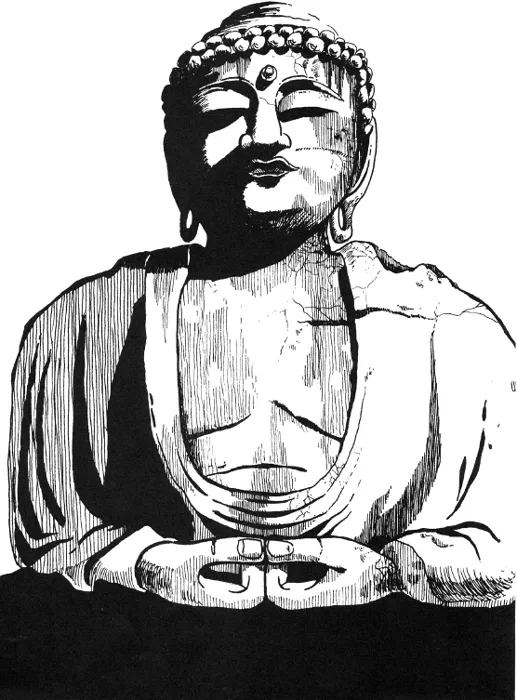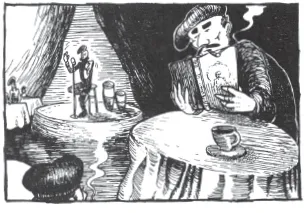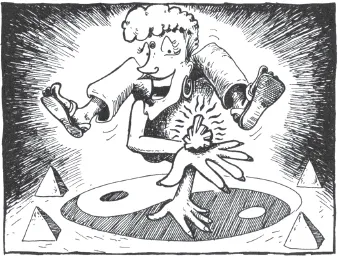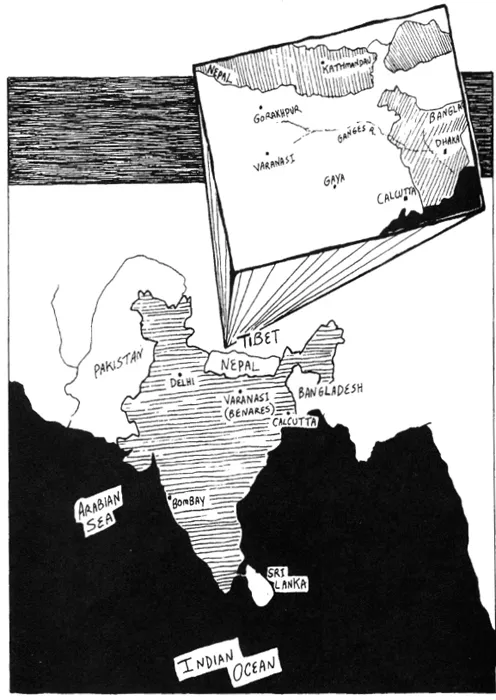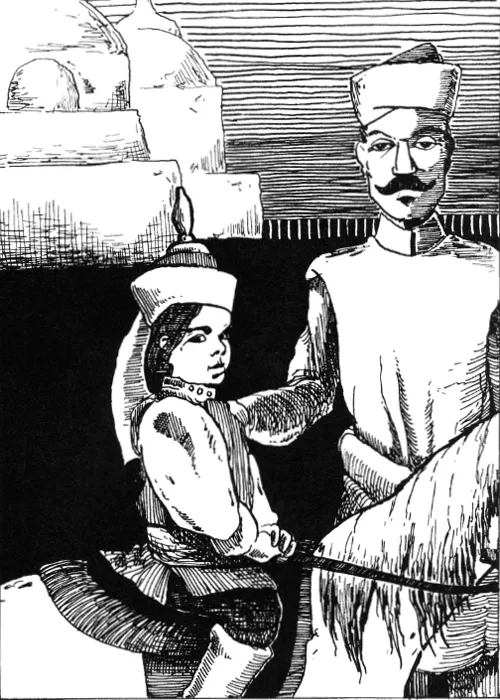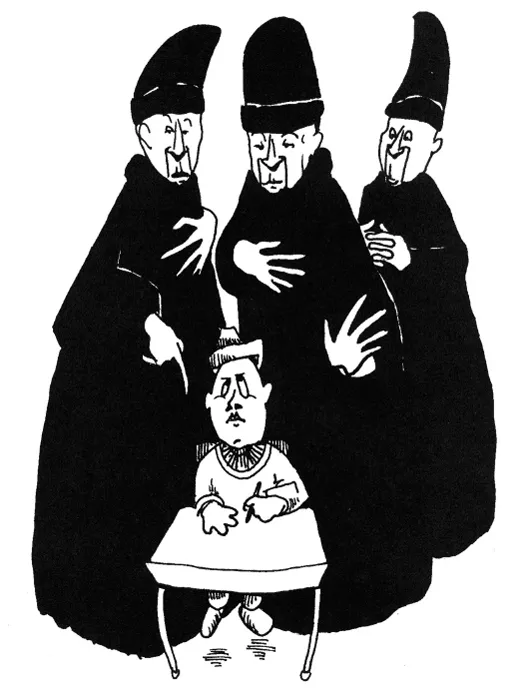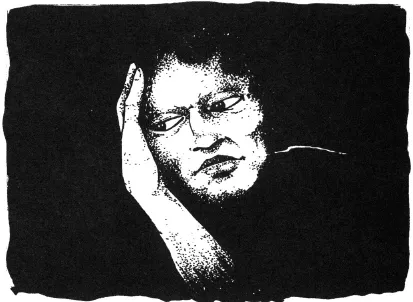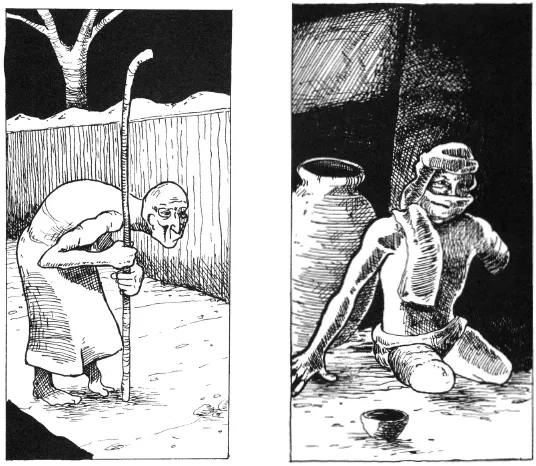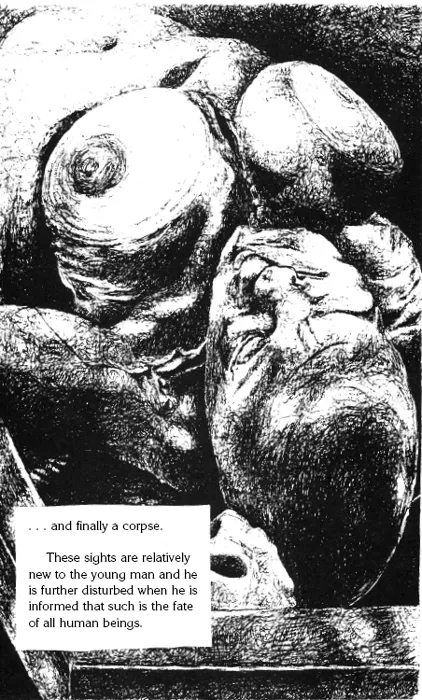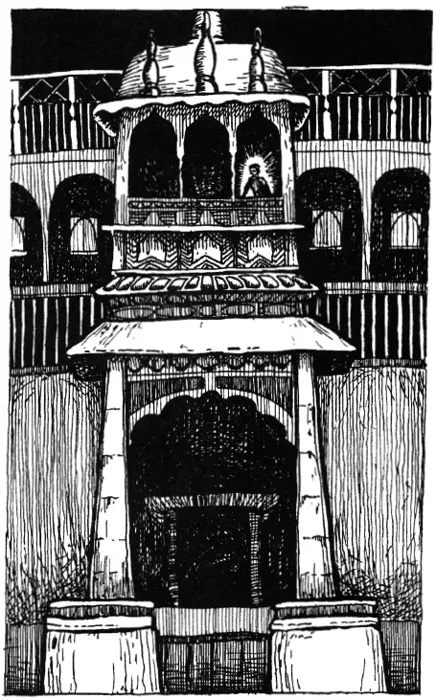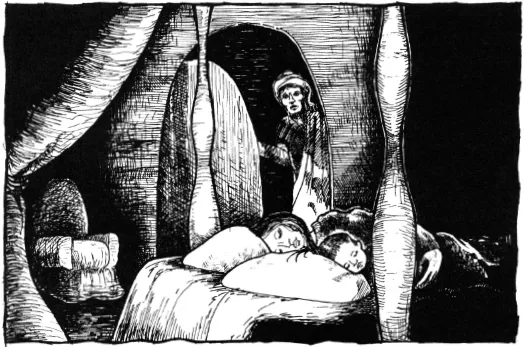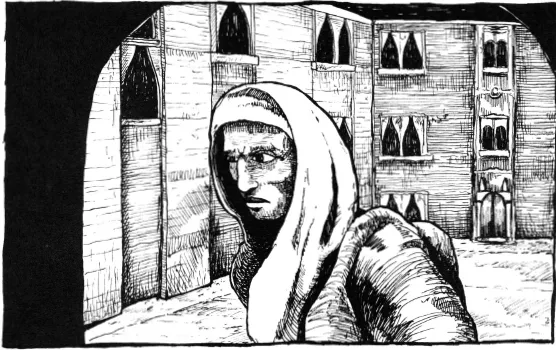![]()
CHAPTER I
The Quest of the Young Prince
Just as there are many forms of Christianity in the West, so too there are many different manifestations of Buddhism in the East. And just as there was supposedly one Jesus who lived and taught in Galilee almost two thousand years ago, so again was there one historically real man who walked the northern Indian landscape and became the “Buddha” (Enlightened One). His name was Siddhartha Gautama and this book is primarily concerned with introducing him and his teachings rather than the whole spectrum of later Buddhist developments.
The West becomes enchante with Buddhism in what seem like cycles of searching spiritualism. In the nineteenth century, American and Continental Transcendentalists recognized the wisdom of Buddhism and sought to deal with it in some fashion. In the “Beat” era of the twentieth century, every bongo-playing poet had a copy of Buddhist scriptures in his pocket.
And lamentably, in this day of the “New Age,” every occult thing from “crystal healing” to psychic spoon-bending isspuriously linked with Buddhism or “Eastern spirituality.” Thankfully, the historical Buddha was not as silly as the recent superstitions that illegitimately intone his name.
Gautama was born in the Ganges Valley near Gorakhpur between Nepal to the north and the Indian city of Varanasi (Benares) to the south. Many scholars maintain that Lumbini, just inside the modern Nepalese border, is his true birthplace.
He was born in 563 BCE to king Suddhodana and his wife Maya (both from the tribe of Shakyas), and legend has it that when he was born, a “seer” foretold that he would one day leave his family to wander as an ascetic holy man. Suddhodana feared that the prophesy might come to pass and, after Maya's early death, he and Gautama's Aunt Prajapati sought to shelter the boy from the world outside the palace. Lest Gautama be lured away, the overprotective father and aunt surrounded the young prince with every kind of luxury and sought to insulate him from any images of suffering.
Being a prince and enjoying the benefits of such a station, Gautama undoubtedly received a fine education and, of course, a share of Brahmanic spiritual tutoring in the Upanishads and Vedic Hindu scriptures—but perhaps not too much spiritual tutoring since Suddhodana hoped for the kind of pragmatic and commonsensical heir that might one day succeed his rule.
Eventually, Gautama married his cousin Yosodhara and they had a son named Rahula.
The family lived peacefully and pleasurably, but in a state of happy ignorance about the world at large.
In time, however, the prince glimpsed the suffering and death of human beings beyond the palace walls, and this new awareness awakened a compassion for his fellow human beings and a distaste for his current sheltered privilege. Gautama's increasing concern with the suffering of human beings is crystallized in a legendary episode wherein he experiences for the first time an elderly and decrepit man, then a maimed individual . . .
Though sources regarding Gautama's family life are scant, we have every reason to believe that he was a loving husband and father. Somewhere in the back of his mind, however, was a restless sense of incompleteness and an increasingly overpowering empathy for less fortunate people. How could he remain in his artificial bliss, he thought, when the world around him was suffering? And how could he continue to ignore the brute fact that his beloved wife and son would one day wither into suffering infirmity and death?
With the goal of discovering the truth about life and death, Gautama resolved to leave behind his home and family and to return only after he had procured the antidote. Late one night, when he was twenty-nine years old, Gautama gazed long upon his sleeping wife and child and then quietly departed from the palace. Thus did he relinquish everything he had known and loved up to that point in his life.
It is an interesting parado...

